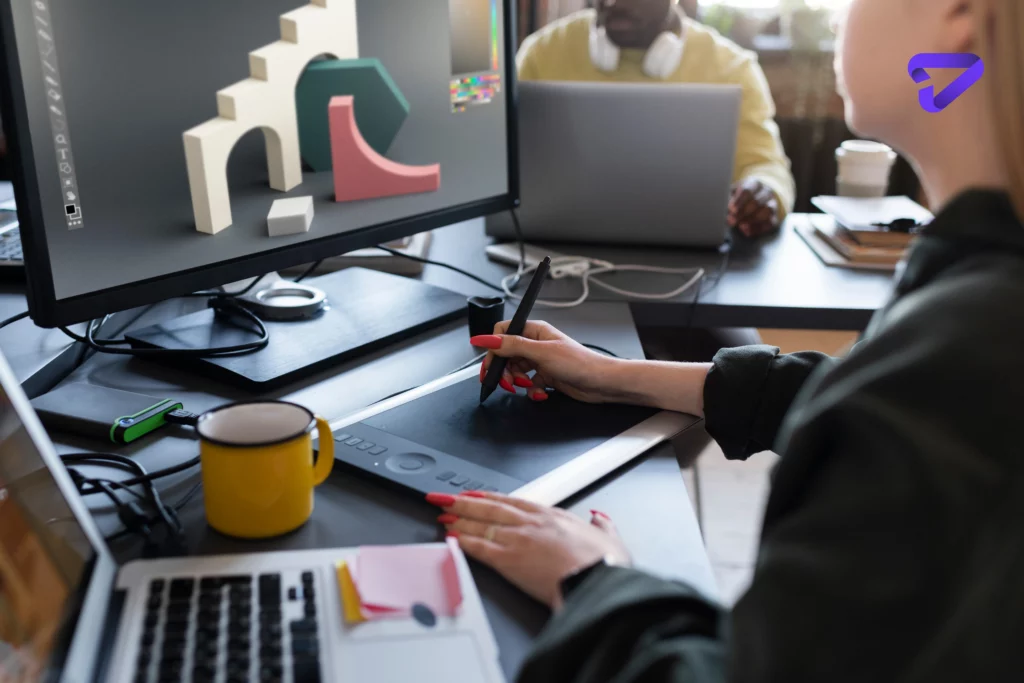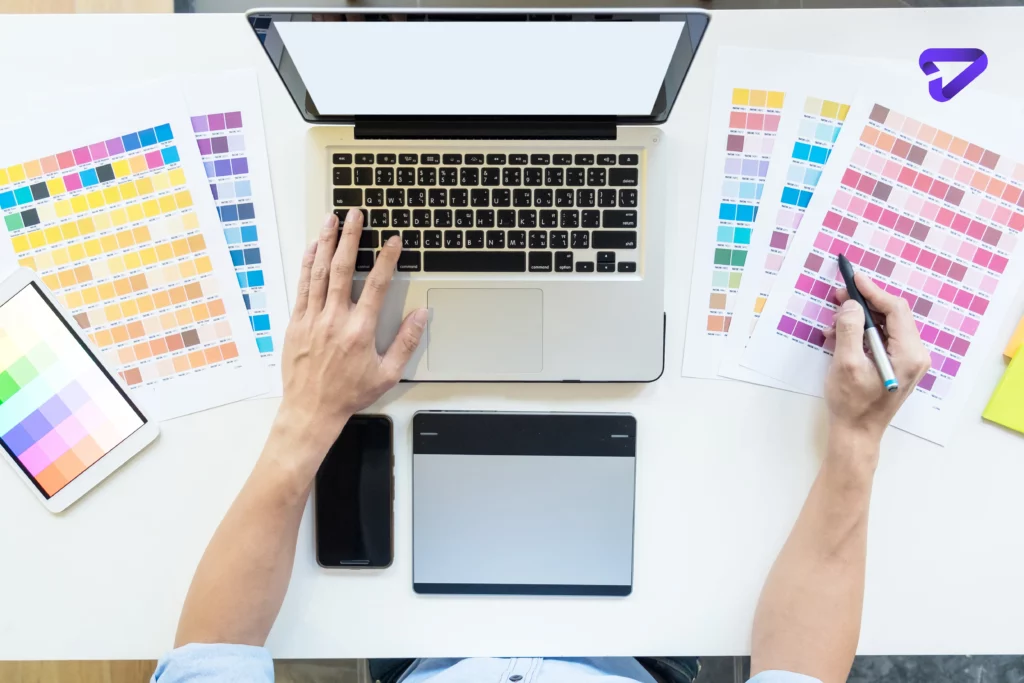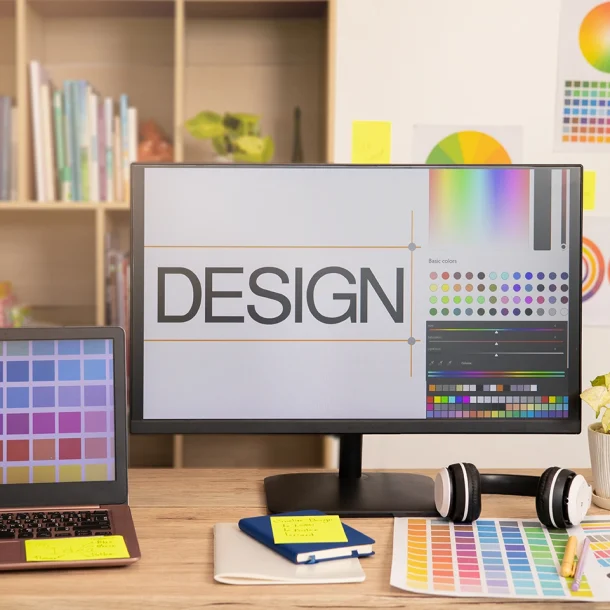
Is it hard to be a graphic designer?
Be a graphic designer and turn your creative vision into reality. Master essential tools like Adobe Photoshop and Illustrator, and craft stunning visuals that captivate audiences. Join a dynamic industry with endless opportunities to showcase your talent and make a lasting impact.
The Ups and Downs of Graphic Design:
An In-Depth Look at the Challenges and Rewards of the Profession
So, is it hard to learn graphic design? Learning any new skill takes time, effort, and patience. Graphic design is no exception. There are many different elements to master, from color theory to typography and layout principles to digital illustration. It can feel overwhelming at first. However, graphic design fundamentals become easier to grasp with regular practice. Online tutorials, courses, and design tools make today’s learning process more approachable. If you set aside time daily for studying and designing, your skills will consistently improve.
Usually, how hard is it to learn graphic design? The difficulty level depends significantly on your personal aptitude and previous experience. Folks with a natural artistic eye or background in art, drawing, photography, etc., may pick up concepts quickly. For others, developing the eye for effective visual communication will take longer. The most important things are dedication and enjoying the process of learning. Your graphic design skills will blossom with consistent work and an interest in the craft.
Client Expectations
Dealing with client demands
One challenging aspect of professional graphic design is managing clients’ expectations and feedback. Since design is subjective, clients will share personal preferences that may differ from yours. This can lead to confusion, contradictory feedback, and frustration. Learning to interpret clients’ comments to improve the design while maintaining your expertise and style is vital. With experience, you’ll develop strategies to align your work with client needs. Setting clear expectations upfront helps smooth the process.
Communicating revisions diplomatically
Navigating client revisions requires diplomacy and patience. Avoid getting defensive if a client asks for major changes or challenges your choices. Listen carefully to their rationale and see if you can find a middle ground through compromise. Explain your reasoning tactfully if you think specific requests could weaken the design. Offer alternative solutions that satisfy both parties. You’ll earn clients’ trust with an open, communicative approach while producing your best work.

Business Skills
Running your own design business
Many graphic designers choose to be freelancers or start their agencies. This requires being both a great designer and a savvy businessperson. You’ll need skills like self-promotion, client outreach, project and time management, accounting, taxes, legal issues, etc. Some designers find the business aspects more complicated than the design work itself. Take time to learn best practices around launching your brand, policies, pricing, contracts, invoicing, bookkeeping, productivity, and growing your clientele.
Continually improving business expertise
Like design skills, your business expertise will evolve through experience. Things that once seemed tricky, like writing project proposals, negotiating rates, or managing invoices, will eventually become second nature. You can also take business courses or hire specialists like accountants or lawyers to advise you. Improving your design abilities and business knowledge is essential to sustaining a thriving graphic design career.
Technical Skills
Learning constantly evolving software
Graphic designers must stay on top of the latest software like Adobe Creative Cloud, which includes Photoshop, Illustrator, InDesign, and more. As these programs release new versions, you must learn fresh features and update your workflows. Some designers find it challenging to keep adapting processes to new tools. But software literacy is a must. Watch tutorial videos, take online courses, and experiment extensively with the programs to become adept. You’ll get comfortable working in emerging programs with regular practice and exposure.
Mastering diverse visual mediums
Today’s designers deliver work across print, digital displays, web, mobile, video, animation, AR/VR, and more. Each medium has its technical requirements, from print production to UI/UX design to HTML5 canvas animations. Mastering the breadth of skills needed for diverse visual mediums poses a significant challenge. But expanding your capabilities makes you a more well-rounded, hireable designer. Specialize in a few areas while developing familiarity across other mediums through ongoing learning.
Creativity and Inspiration
Conjuring fresh ideas
Designers need to channel boundless creativity on demand. Some struggle with imagining innovative visual solutions quickly, especially when burnt out. However, inspiration can be found everywhere – nature, architecture, fonts, artwork, photography, and more. Build a library of design inspiration sources you can reference when you need a spark. Try random brainstorming, creating mood boards, or collecting color palettes and textures. Executing ideas smoothly improves with practice. Remember that initial concepts are meant to be refined. Allow rough drafts to blossom into polished designs.
Staying motivated
The pressure to produce brilliant designs and tight deadlines can diminish intrinsic motivation over time. Set personal goals and fun side projects unrelated to client work. Experiment freely with new software, mediums, styles, and techniques. Constructively critique your work to identify areas for growth. Connect with fellow designers for community and advice. Stay actively engaged in the industry by reading design blogs and attending events. Make an effort to nurture what excited you about graphic design initially. Rediscovering your passion will help sustain innovation.

Standing Out
Facing extensive competition
The graphic design industry is highly competitive, especially in popular big cities like New York and Los Angeles. Design schools graduate thousands of talented students every year. Establishing yourself in a saturated market takes courage, persistence, and patience. Opportunities exist everywhere if you actively network, market yourself creatively, and expand your capabilities. Target local businesses in your city first to build a portfolio. Offer discounted rates initially to secure clients. Consistently produce high-caliber work and provide excellent customer service to grow through referrals.
Developing your personal brand
One of the best ways to stand out is to cultivate a strong personal brand that communicates your distinct design perspective and strengths. Analyze what makes your work and approach unique compared to competitors. Design a visually striking logo and portfolio website that showcases your unique talents. Be active on social media and share examples that resonate with ideal clients. Publish a design blog with industry insights and tips. The goal is to develop a cohesive identity and reputation that sets you apart. Over time, your brand will help attract clients aligned with your services.
Work-Life Balance
Dealing with stress
Is it stressful to be a graphic designer? While the role can be demanding with tight deadlines and high client expectations, the creative fulfillment and opportunities for innovation often outweigh the challenges, making it a rewarding career choice for many.
Heavy workloads and tight deadlines are unavoidable in graphic design. Working long hours to please demanding clients or managers can take a toll over time. Symptoms like burnout, irritability, and lack of sleep may arise. That’s why maintaining a healthy work-life balance is essential. Prioritize taking regular breaks during the day, even if just brief walks or stretching. Leave work at a reasonable hour to preserve evenings for personal time. Set boundaries with clients if projects exceed scope. Say no sometimes if your schedule is overloaded. The better you care for yourself, the higher the quality of your work will be.
Making time for relationships and hobbies
To achieve equilibrium and stay inspired, allocate free time for non-work related activities and relationships. Spend time with family and friends often. Participate in hobbies like sports, reading, crafting, and more. Take relaxing staycations, especially after large projects. Take frequent screen breaks throughout the day. Take PTO when you need a recharge. Take care of your physical and mental general well-being by eating nourishing foods, exercising, meditating, or seeing a therapist. The demands of graphic design require caring for yourself first.
Ongoing Education
Learning never stops
Remember, you can learn graphic design online for free. The software, technology, techniques, and trends within graphic design change rapidly. Lifelong learning is imperative to stay relevant. Set aside time and budget regularly for taking new courses, attending conferences, learning new skills like motion graphics, and absorbing inspiration. Follow industry leaders and publications. Stay on the pulse of emerging styles and tools. Teach yourself through online tutorials, communities, and books. Approach every project as a new chance to expand your knowledge. Stay hungry for knowledge, and your abilities will continue scaling new heights.

Investing in professional development
you can learn graphic design on your own by utilizing online resources, tutorials, and practice projects to build your skills and portfolio, making it possible to become a successful graphic designer. if you need a guide to learn graphic design by your own please read our blog.
Make professional development a priority if transitioning from student to working designer. Take continuing education classes through colleges or online learning platforms. Attend seminars and workshops like design camps and retreats. Seek mentorship from respected designers at more experienced agencies. Join professional associations like AIGA to access events and resources. Earn prestigious certifications like becoming an Adobe Certified Expert. Immerse yourself in the industry to expedite your growth. Upskilling early in your career will fuel lasting success.
at the end, read the point of view of brainstation about being a designer.
The path of a graphic designer brings unique challenges but immense rewards. By focusing on continuous skills development, healthy work practices, resourcefulness, and persistence, you can find great fulfillment in bringing creative visions to life. With passion and dedication, you can build an exciting career in graphic design. As a graphic designer charlotte nc, we can bring your ideas to life. Reach us now to find out more.








